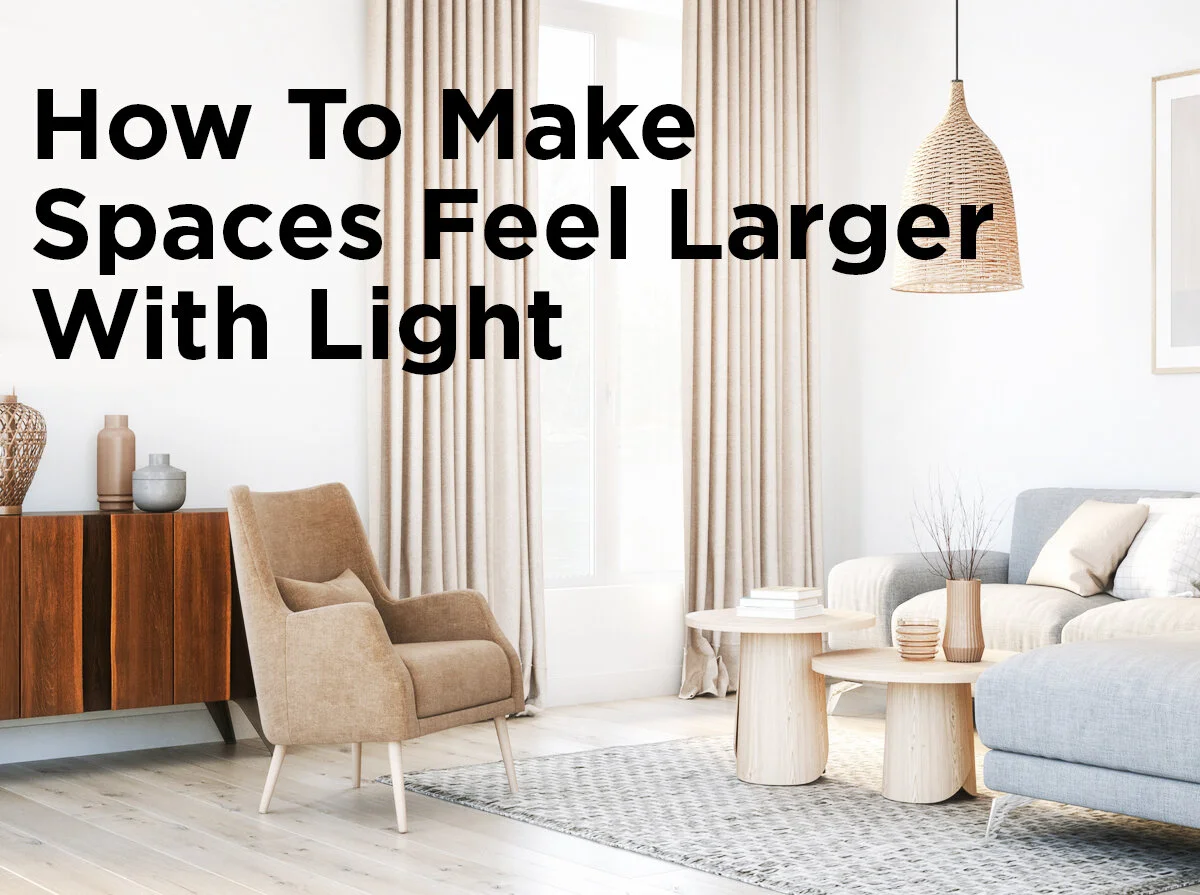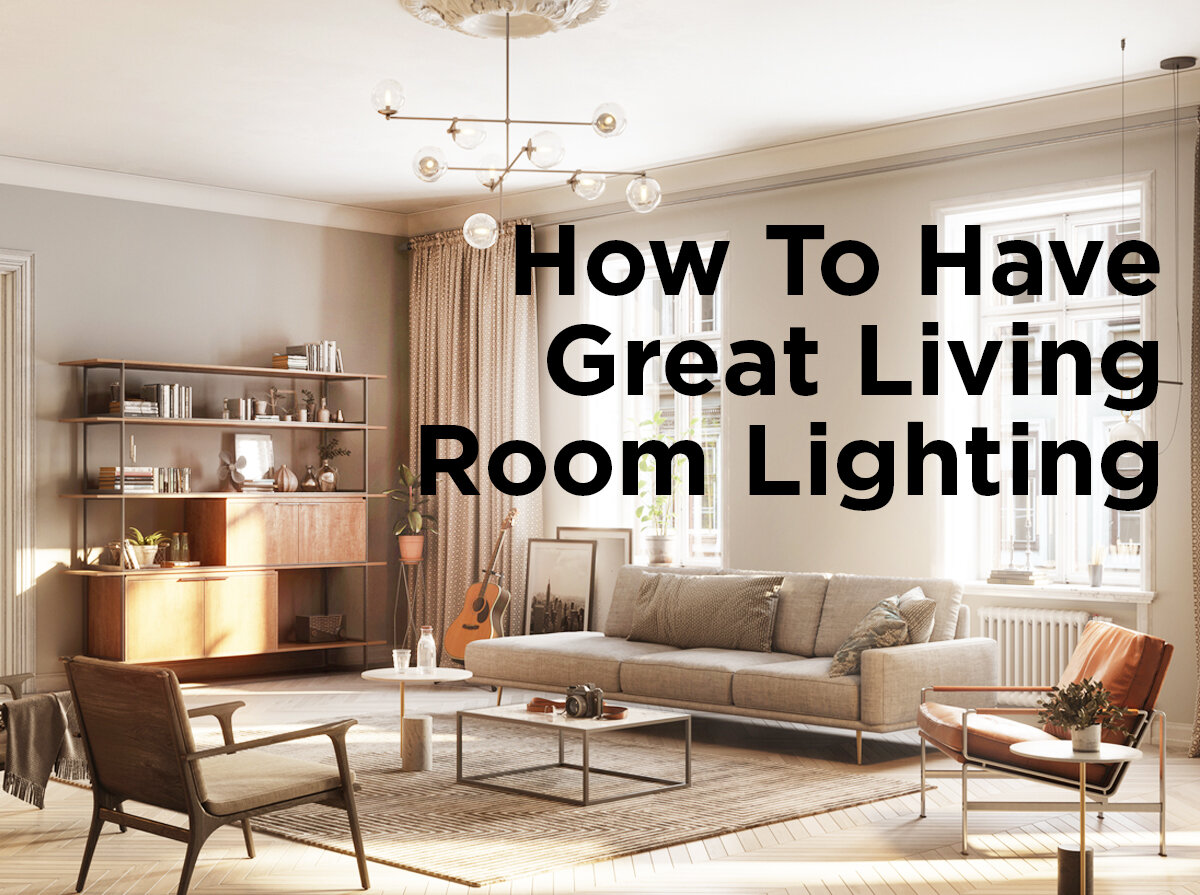How to Make Spaces Feel Larger with Light
Whether you live in a smaller apartment or a home with petite sized rooms, you understand the need to make the most of your space. Low ceilings and limited square footage can cause rooms to feel cramped and stuffy instead of open and inviting, making them hardly appealing to visitors, much less yourself. While unfortunately we can’t make your rooms physically larger, we can provide some lighting tips that will make them look and feel like they are. These simple strategies can add a little breathing room to your restricted spaces.
1. Avoid Bulky Ceiling Fixtures
Large, low-hanging ceiling fixtures will accentuate low ceilings. Not to mention, they take up vital headspace. Since a standard ceiling height for a residential home is about 8 feet tall, the bottom of your ceiling fixture should be hung no lower than 6-foot 8-inches above the floor (which means your fixture should be more or less 16 inches in height). Consider installing recessed downlights, where the majority of the fixture is hidden above the ceiling rather than below it, or using flush mount close-to-ceiling-lights for ambient lighting. You could also add a little more drama to your room with a stylish fixture that is low in profile but large in diameter.
2. Use Multiples Light Sources
Filling your room with light will make it seem larger by eliminating shadows and creating “sections” in your room. As we mentioned above, avoid bulky or low-hanging lamps and opt for smaller, unobtrusive fixtures instead. Be sure to take advantage of the three layers of lighting design: ambient, task, and accent lighting. In other words, use additional light fixtures other than your standard ceiling lights—such as table or floor lamps and wall sconces—for task and accent lighting, and place them throughout your room where they are needed.
3. Wash Walls with Light
Wall-washing is accomplished simply by directing light towards certain features on your wall. This technique will appear to expand your room’s boundaries while calling attention to positive aspects of your room, such as artwork or architectural accents. To create a wall-washing effect, use recessed eyeball lights, track lights, or other multi-directional fixtures.
4. Take Advantage of Uplighting
Tasteful use of uplighting will draw eyes upwards, visually lifting your room. Uplighting, as you may have already guessed, involves directing light towards the ceiling. This can be accomplished in several ways depending on your light fixtures. Silver crown bulbs or certain lamp shades are great options for standing or table lamps, and select wall lights or sconces can also direct light upwards. If you’re willing to make a dramatic change, consider installing uplighting fixtures from the floor rather than from the walls. Ask an electrician or lighting designer about your options.
5. Incorporate Backlighting
Placing light behind objects can create the illusion of depth and give your space some additional character. Some of the best places to use backlighting include alcoves, cabinets, and furniture, as well as screens and displays. Strip light and rope light are two of the most popular (and space-saving) options for backlight accents.
6. Reflect Light with Mirrors
Large wall mirrors not only make rooms feel larger by reflecting whatever is in the space across from them, but they also reflect and multiply light. Make sure to consider your lighting for positive or negative effects when deciding where to place your mirror on the wall—you’ll want to avoid harsh glare, but at the same time bring more light into your space. This tip will be especially useful in rooms with skylights or large windows.
All in all, there are many ways lighting can be used to create the appearance of a larger room. Directing light towards your walls and ceiling expands your boundaries, and using smaller, unobtrusive light fixtures saves on physical space. Moreover, task and accent lighting techniques allow you to accomplish this while enhancing your room’s style and character instead of sacrificing it. Left with any questions or comments about this article? Drop us a line below or on Facebook, Twitter, LinkedIn, Instagram, or Pinterest!







